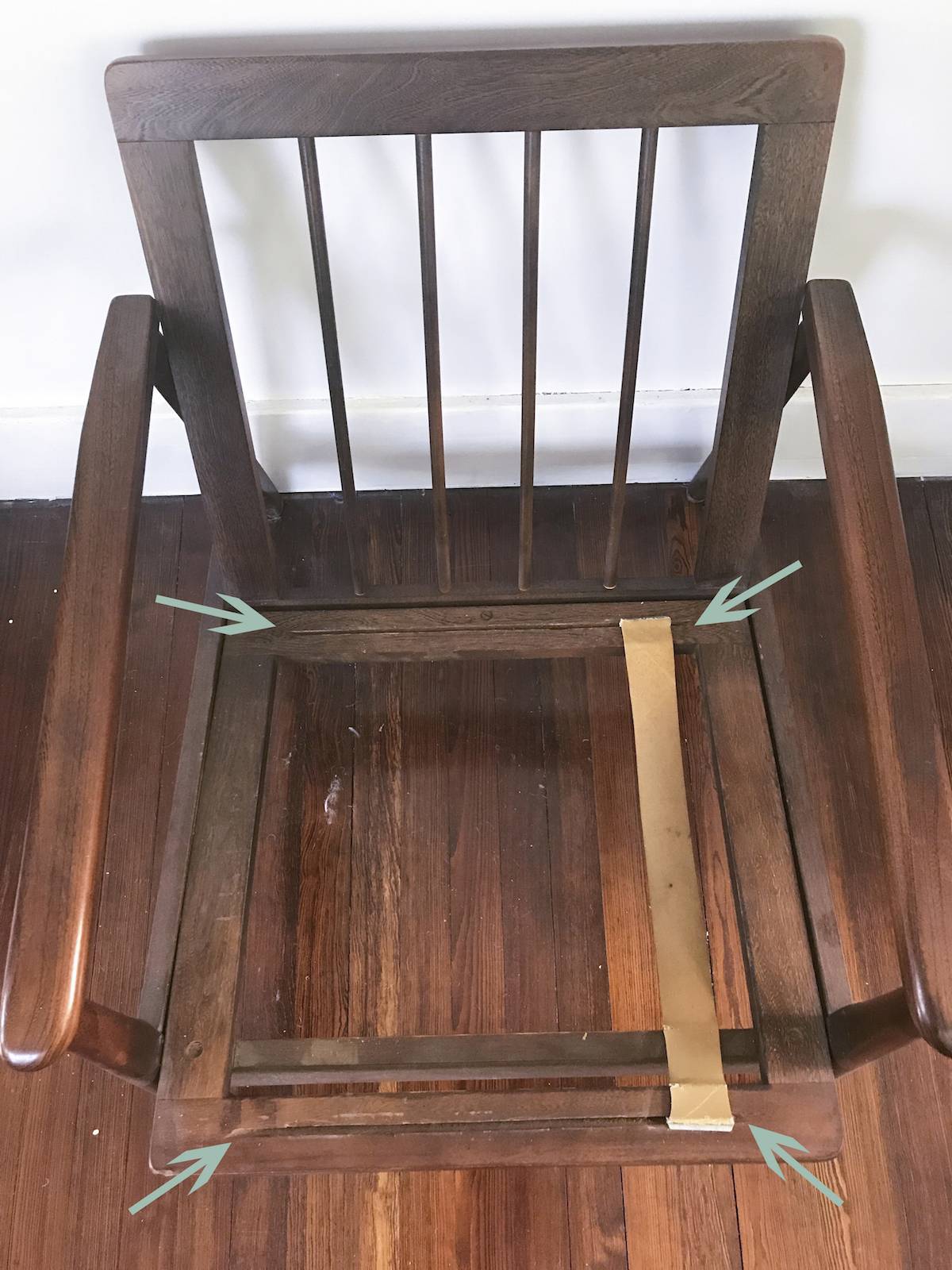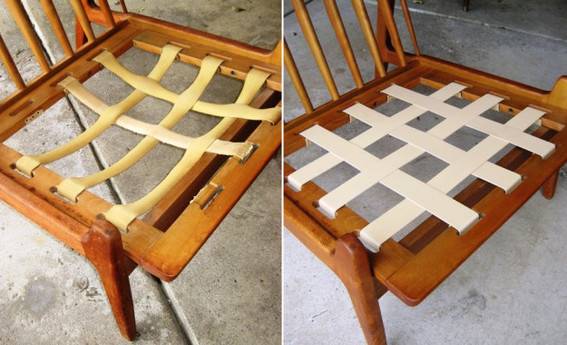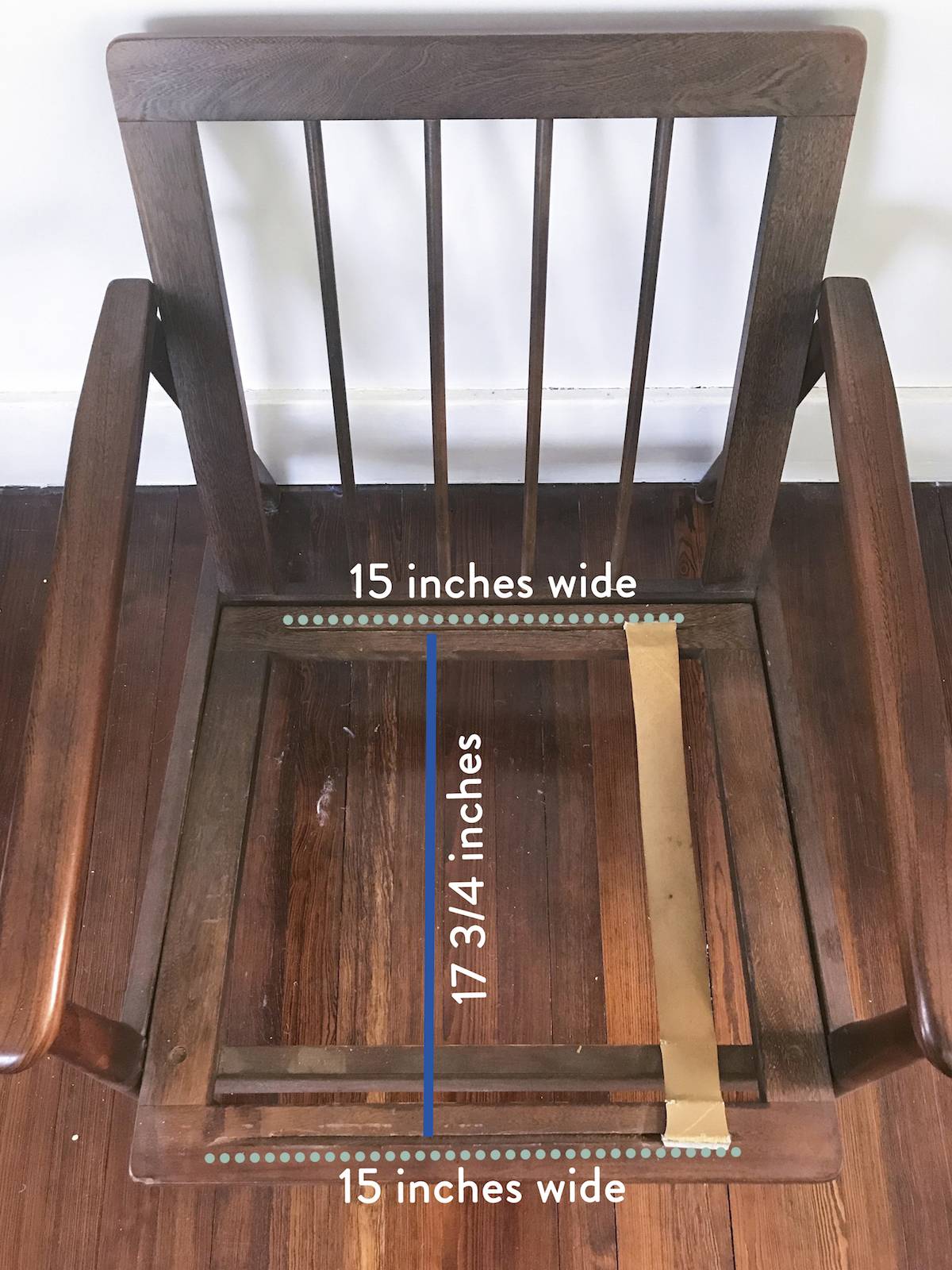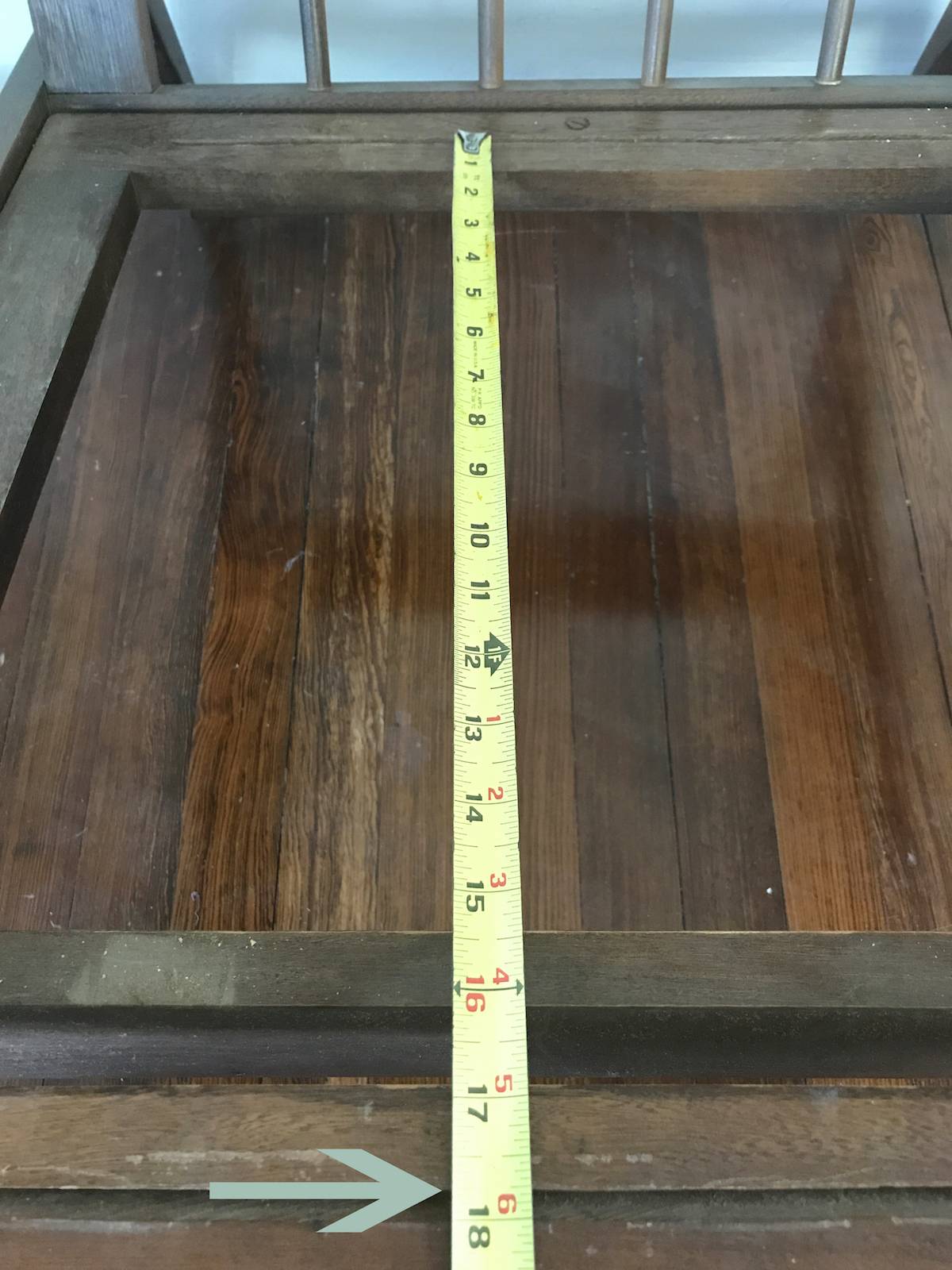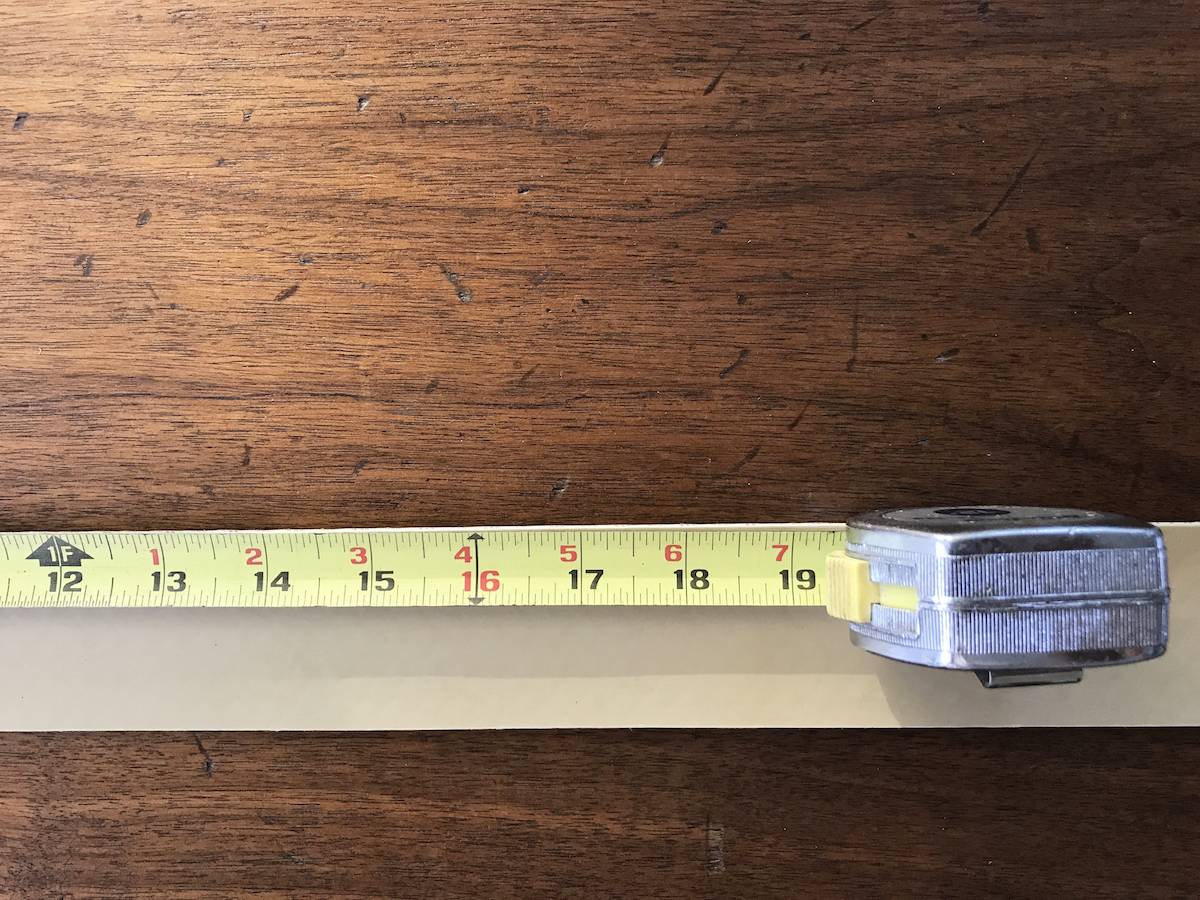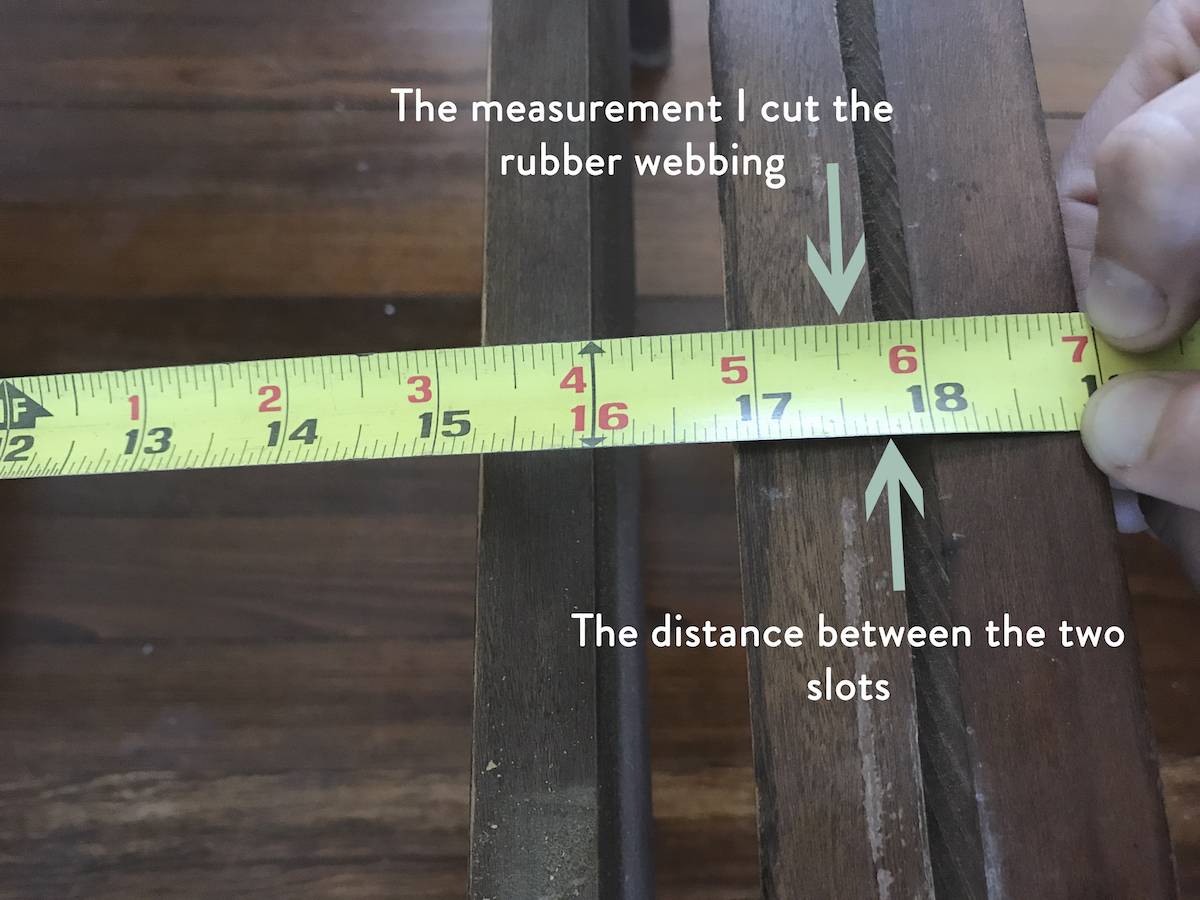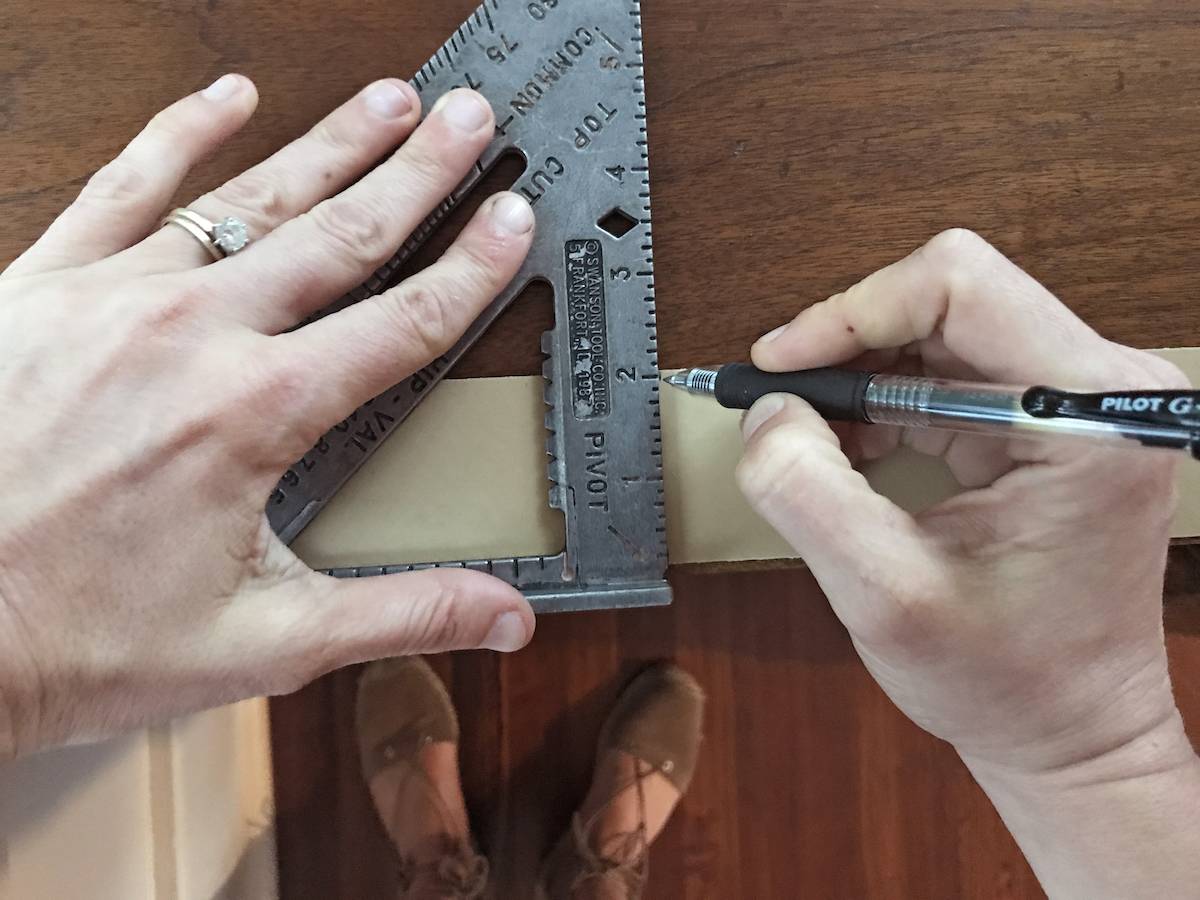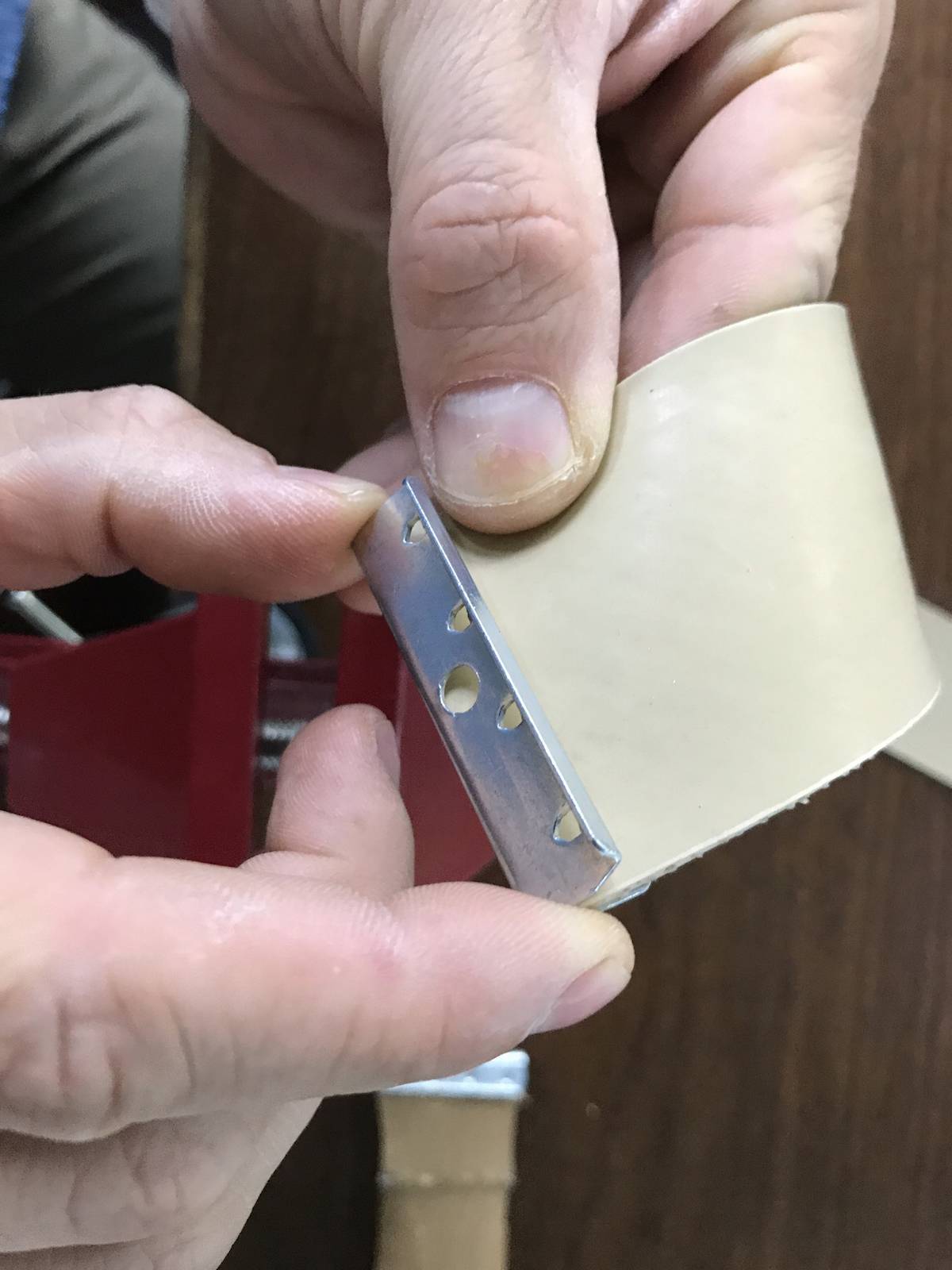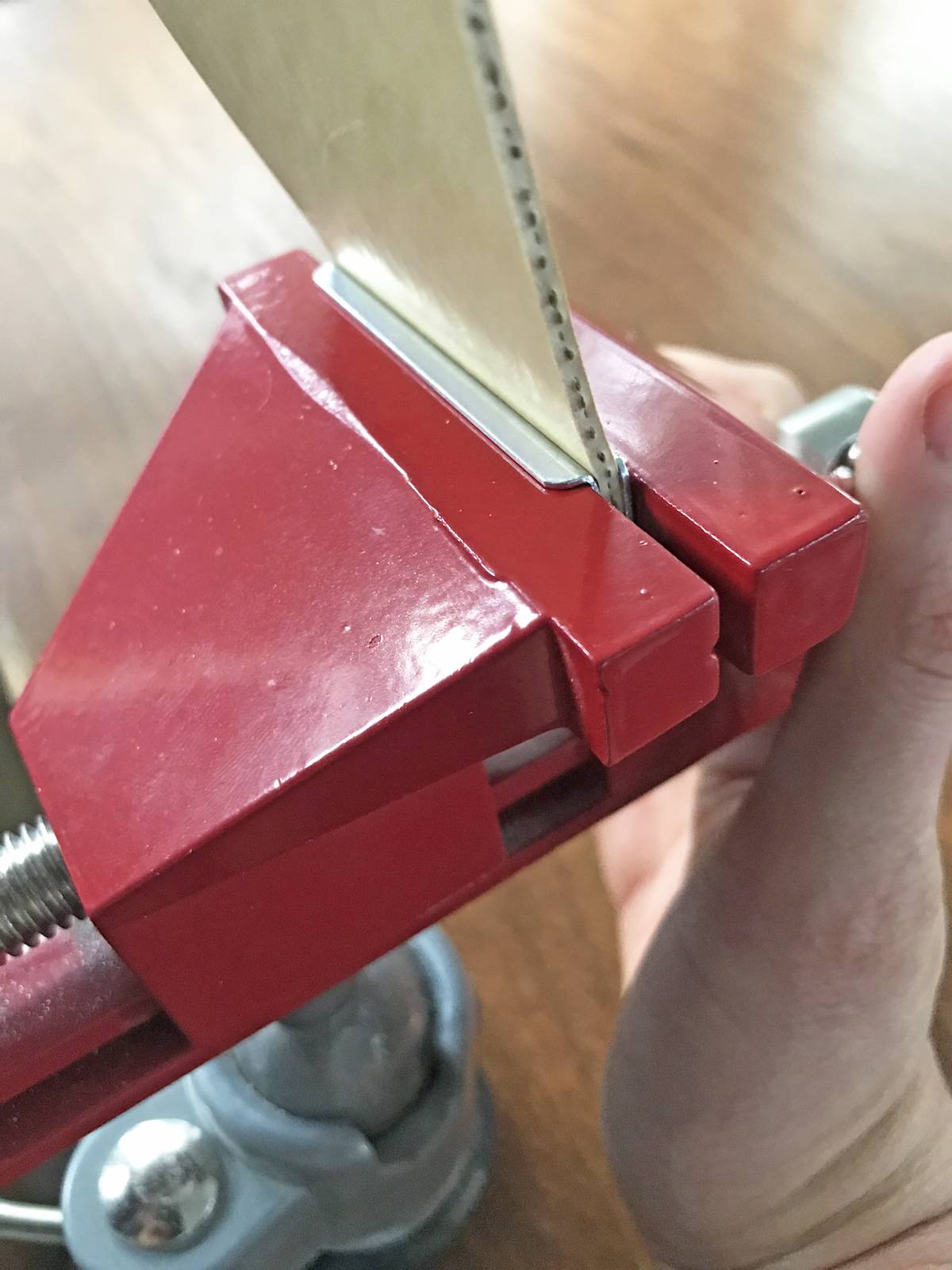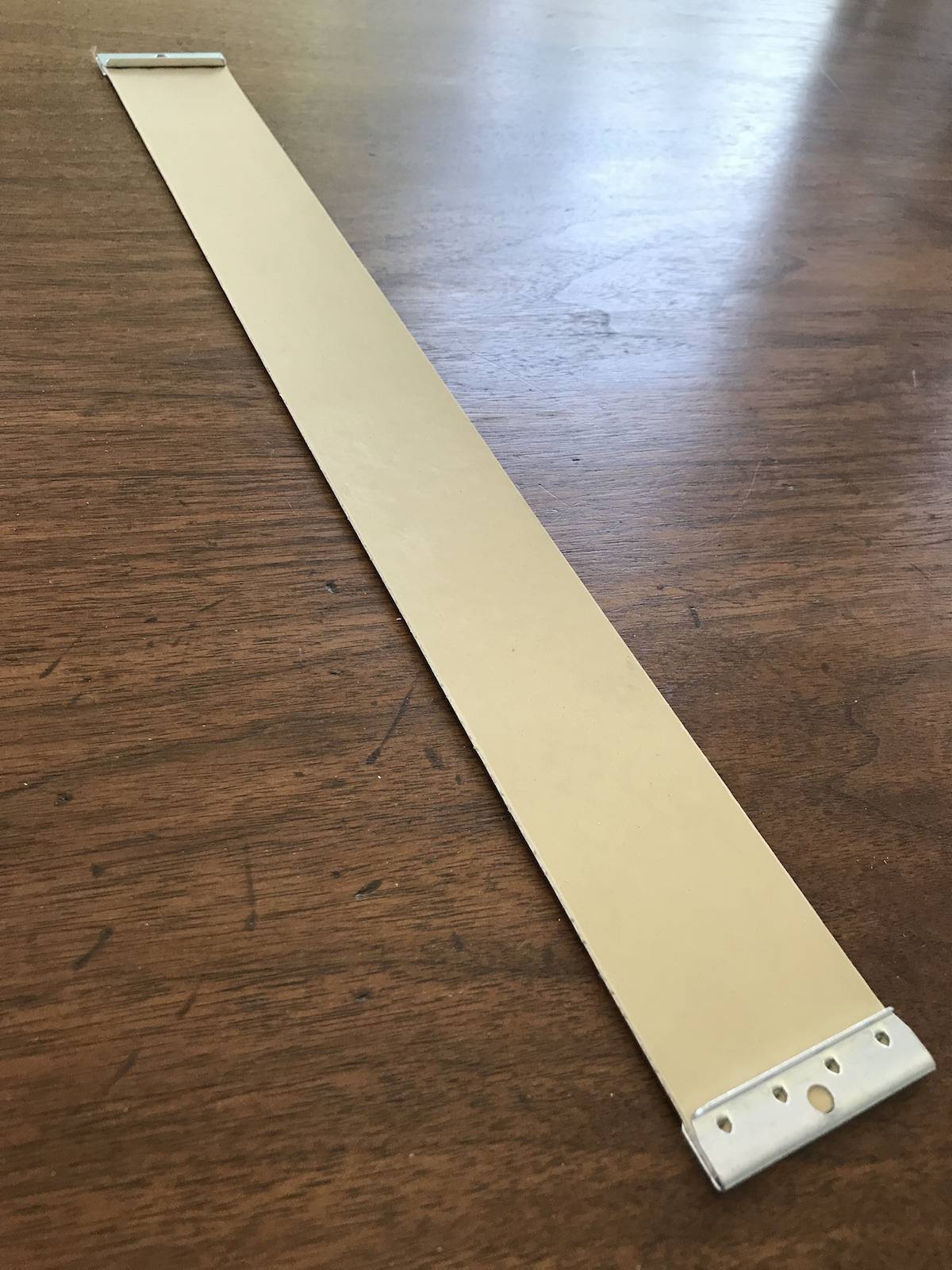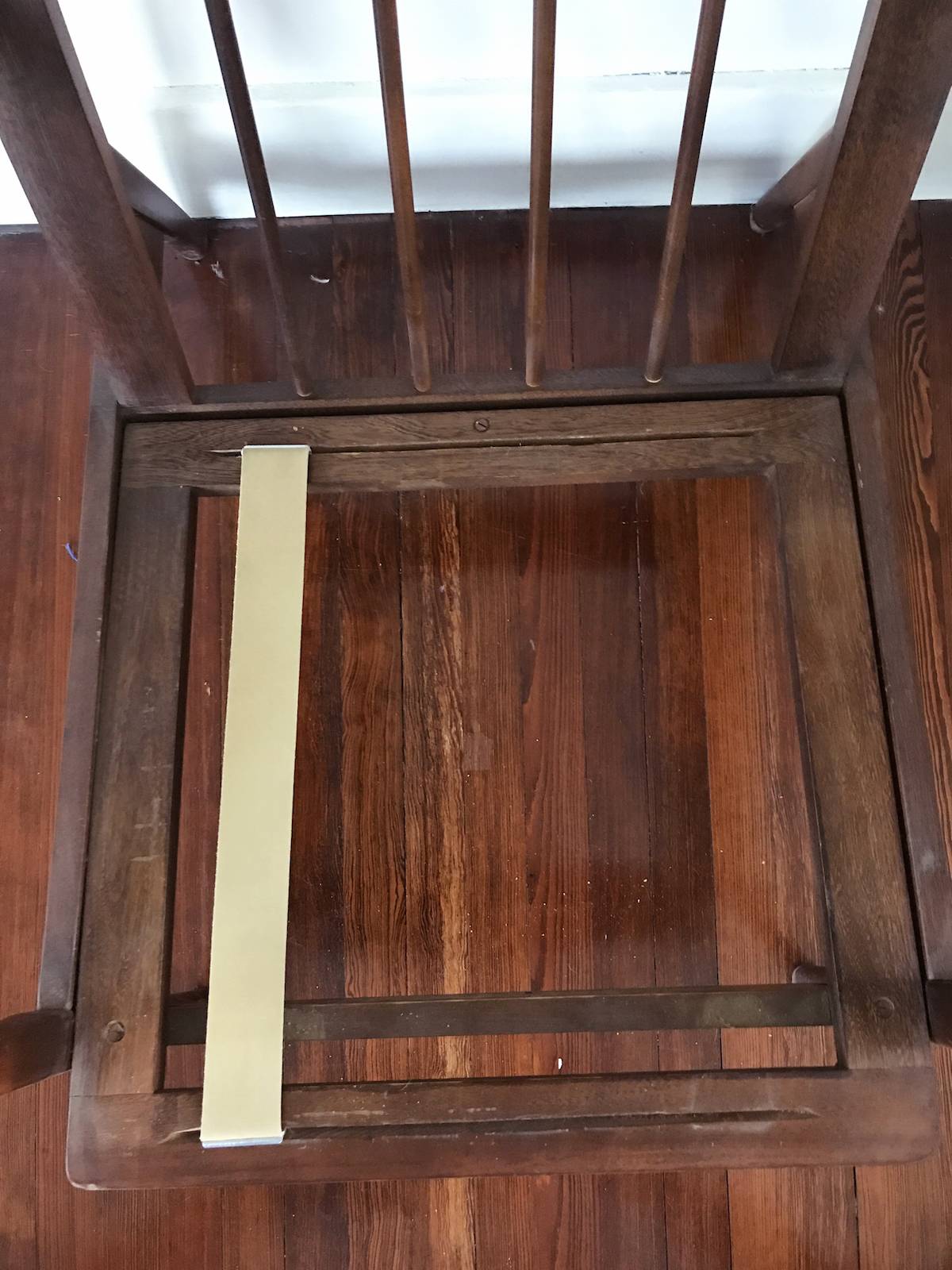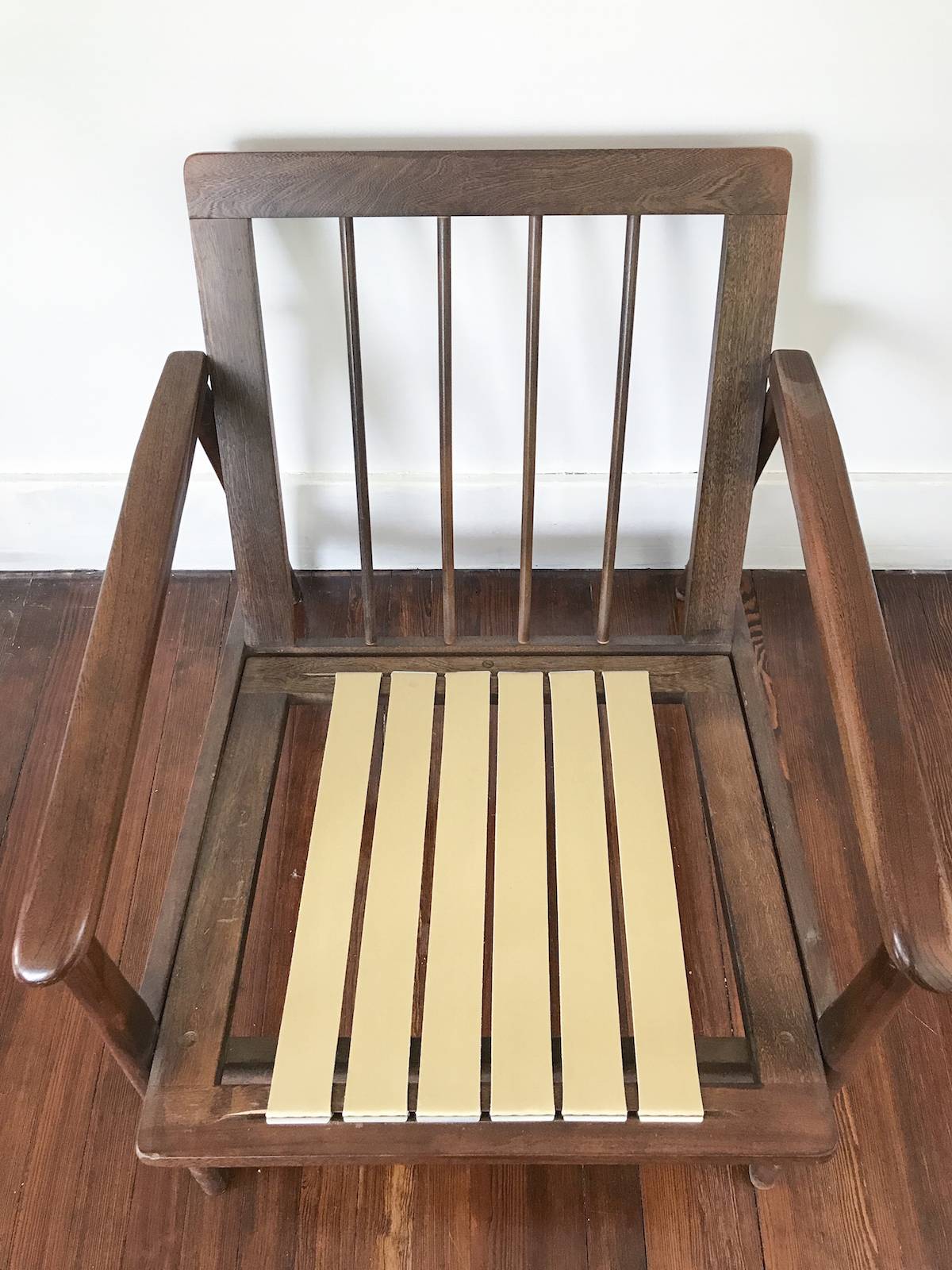Are you looking to give your old chair a new lease on life? One way to restore its comfort and support is by rewebbing the seat. In this DIY guide, we will walk you through the process of how to reweb a chair, step by step. By following these instructions, you can restore the elasticity and durability of your chair’s seat, making it as good as new.
Understanding the Basics of Chair Rewebbing
Rewebbing a chair might sound daunting at first, but it’s really about giving your seats a much-needed makeover. Think of the webbing as your chair’s silent champion, providing unseen comfort and support every time you sit down.
Yet, even champions have their limits.
When the webbing gets stretched or worn, it loses that springy support, leading to a saggy, uncomfortable seat. This is where the magic of rewebbing steps in.
By swapping out the tired, old webbing with fresh, sturdy rubber Pirelli webbing, you breathe new life into your chair. It’s like a spa day for your furniture!
Not only does this process restore your seat’s bounce and support, but it also extends its life, ensuring it can handle more cozy book reading sessions, lively dinner conversations, and lazy Sunday lounging.
So, let’s get ready to give your chairs (and you) the pampering that is deserved!
Before diving into the art of rewebbing your chair, let’s talk shop—literally!
You’ll need to gather some key players for this project: 2-inch Rubber Pirelli webbing to bring back that bounce, webbing clips (two per strap) to secure our star player in place, a trusty tape measure for precision, a carpenter’s square to ensure our cuts are sharp and accurate, a pencil or pen for marking our game plan, a bench vise to grip our clips with confidence, and lastly, a pair of reliable scissors or a sharp box-cutting knife to make the cut.
Also, secure an extra pair of hands—you’ll need a teammate for the project.
You can snag these supplies from online marketplaces like Amazon or Etsy, or perhaps even your local hardware store.
With these tools and materials at the ready, you’re all set to get started.
Preparing Your Chair for Rewebbing
Start by removing the cushions to see the chair’s structure, similar to preparing a workspace. This is your starting point. You’ll need to look at the spaces where the rubber Pirelli webbing will go.
Now’s the time to use your tape measure and accurately measure the gap between these spaces, as getting this right is important for the final comfort and support of the chair.
Next, clean the frame of your chair. This step is important not only for looks but also to ensure the new webbing attaches well, helping to keep the chair in good condition for future use.
Prepare everything for the changes ahead.
Measuring and Cutting Your Webbing
With your tape measure and carpenter’s square in hand, it’s time to turn those precise measurements into action.
You’ll want to cut your rubber Pirelli webbing with the accuracy of a skilled craftsman. Mark your cutting line with a pencil or pen, aligning your carpenter’s square to ensure that each strap will be cut at a perfect 90-degree angle.
This is where the beauty of your project starts to take shape—each piece of webbing, meticulously measured and cut, promises to snugly fit the chair’s frame, restoring its original comfort and support.
Now, grab your scissors or sharp box-cutting knife and make the cut. Remember, a clean, straight cut here sets the stage for a smoother installation process later. Imagine each strap as a vital thread in the fabric of your chair’s new life, each cut paving the way for a rebirth of comfort and style.
Attaching Clips and Securing the Webbing
Once your webbing has been accurately cut, the next step involves attaching the clips.
When you secure the clip with the vise, ensure it’s properly attached.
Do the same for the other end, making sure both clips are tight and in place.
With someone’s help, it’s time to attach the webbing to the chair frame.
Fit each strap by sliding the clips into the correct slots on the frame, listening for a click to confirm each is secure.
Continue this method, strap by strap, until the chair’s structure is fully supported and flexible. Attaching each clip gets you one step closer to restoring your chair’s comfort, preparing it to serve as a relaxing spot again.
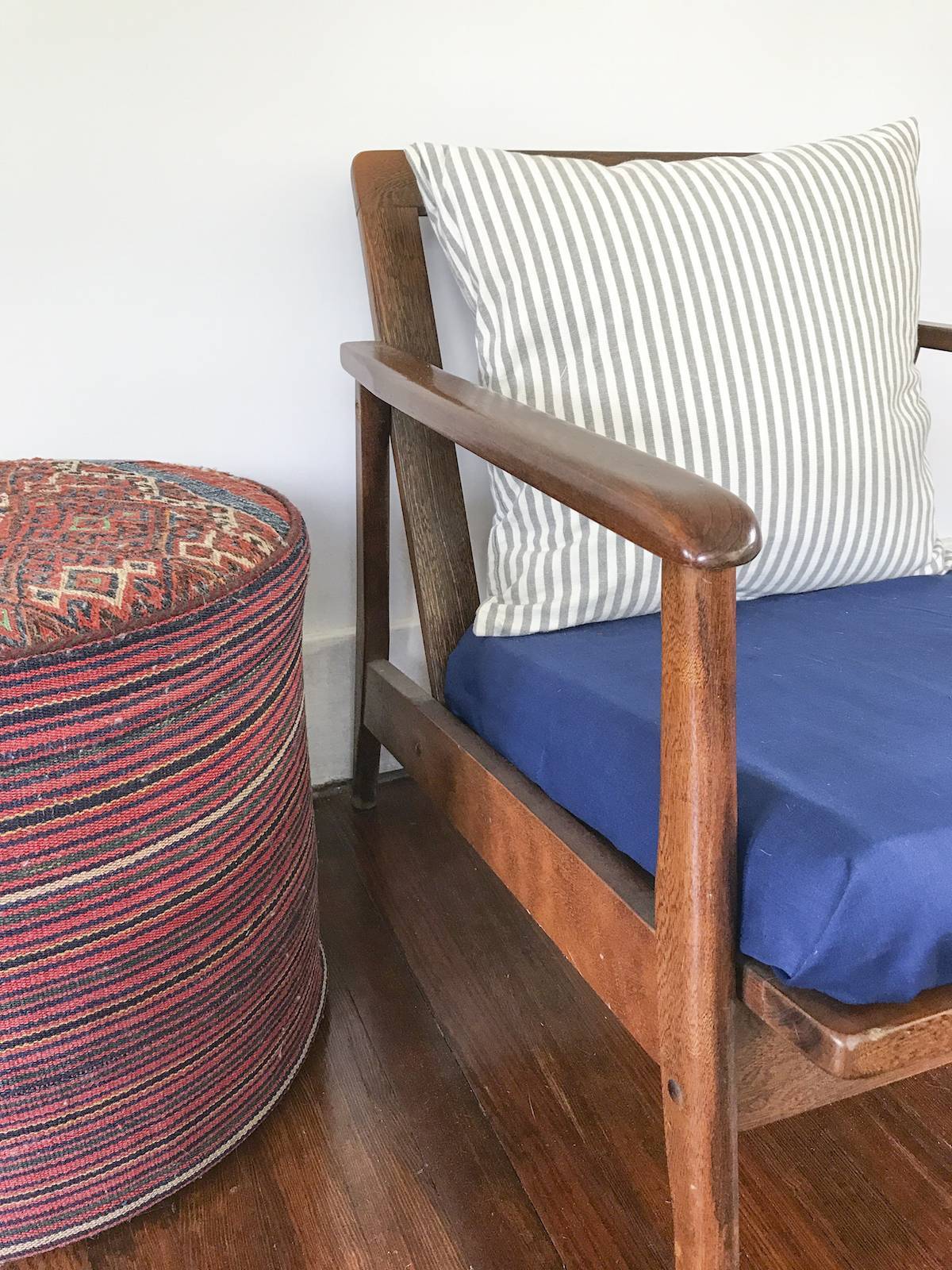
Finishing Touches and Maintenance Tips
Voilà! With the chair rewebbing complete, it’s time to welcome back the charm and support of your chair.
Sink into it and savor the moment; your project is a success! To ensure your masterpiece stands the test of time, treat it with care.
Steer clear of loading it with heavy items and keep an eagle eye on any signs of wear.
Regular check-ups will help you catch any stretch or strain early, keeping your chair in tip-top shape for countless cozy moments ahead.
Materials
- 2 inch Rubber Pirelli webbing. I got my webbing here. You can find it in pre-cut lengths on Amazon and even on Etsy.
- Webbing Clips for rubber webbing (two for each strap)
- Tape measure
- Carpenter’s Square (or anything that will help you cut the straps at a 90 degree angle)
- Pencil or pen
- Bench vise
- A really good pair of scissors or a sharp box-cutting knife.
- An extra set of hands. This project is really hard to do alone.
Instructions
Investigate how the chair was meant to be webbed.
To do this, remove the cushions so you can see the complete structure of the chair. My chair was made with one long groove on the back and front. This is where the webbing clips will be inserted. So that means my chair was made to have its webbing straps go from front to back only.
The number of straps is determined by the length of the slot on your chair and how much space you prefer between each slot. Your chair might have a specific number of smaller slots/grooves. If the slots are not open all the way through to the bottom, you need clips on the ends of your straps. I have also seen versions of these chairs that have slots/grooves on all four sides.
If this is your chair, you will have a determined number of straps of each side and they will be woven.
Measure the distance between your slots.
The length of the groove on my chair is 15 inches. The rubber webbing is 2 inches wide. I decided to use six 2″ straps with less than an inch between each strap. Since I don’t have grooves on all four sides I won’t be weaving the webbing.
If I did need to weave it, I would have allowed for at least 1.5 inches of space between each strap. On my chair the distance between the front slot and the back slot is 17 3/4 inches. You want your straps to be cut to this exact length, or a little less.
The rubber webbing is meant to stretch and be tight. For ordering purposes I rounded up to 18 inches per strap. I also wanted to buy enough to have some extra for mistakes.
Determine the style of clips you need.
My chair required regular clips. If you need 45-degree-angle clips, you can order them here and attach them to the same rubber webbing I used for my chair.
How do you know which clips?
- Look at your old webbing.
- Look at your groove. All the grooves are angled a little bit but if your slot opening is 1/16 or less and then you need the 45 degree clips.
Measure and cut your straps.
I recommend cutting your straps to the exact (or little less) distance between your grooves. You will have to stretch the webbing to insert the clips into the grooves, and that’s a good thing! You want your finished straps to be tight.
Since there would be no weaving on my chair, for extra seating support, I decided to cut my straps 1/4 inch shorter than the distance between the grooves. This stretches the webbing and makes for a more taut surface to rest the cushion.
Use the tape measure to mark your where you need to make your cut line.
Use your carpenter’s square to make a straight line. Measure one more time, checking to make sure your cut line is the correct distance.
Use your scissors or box cutter to cut along the line.
Use a vice to attach the clip to the webbing.
This is where you need two sets of hands. Place the clip onto the end of your strap. It doesn’t really matter what side of the strap is up.
I chose to make the smoother side of the strap the side that faces up. Place the clip on the end of the strap with the “lip” of the clip facing up. Place the clip into the vice and have someone hold it while you turn the lever to close the vice.
Once the vice closes on the clamp, hold the strap up and tighten.
Clamp the clip until the spikes are almost pushing through the webbing. Note: the spikes on the clips won’t push through the webbing. They are not sharp enough, but you will see them bulge through a little. If they do this, then you’re good to go.
Repeat step 5 and attach a clip on the opposite side of the strap.
Make sure you clips are installed on the strap in the same way. One side of the strap will have both “lips” facing up like in the picture above.
Attach your strap to the chair.
You’ll need to find a helper to stretch the webbing with you. One person holds the chair down, while the other stretches.
Repeat Steps 4-7 until all the straps are installed.
For extra support I chose to install 6 straps with small spacing in between. My chair really only needs five but I like the way it feels when I sit with six straps. I also feel like six straps will allow for a little more durability.
That’s it!



